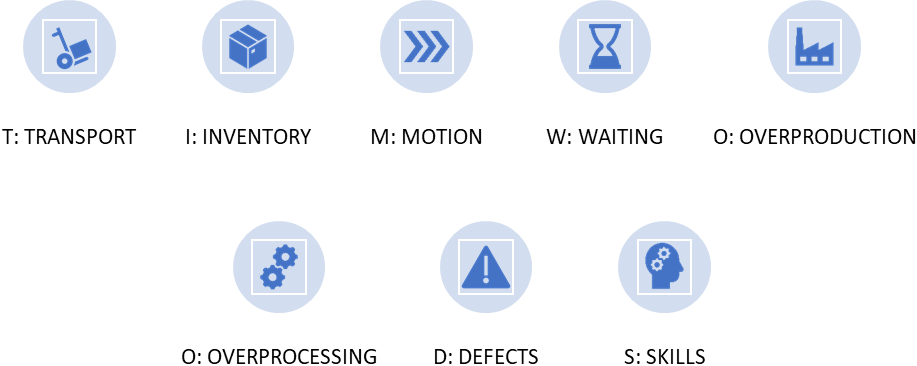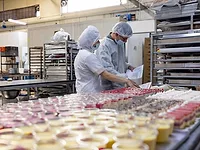Does ‘TIM WOODS' Work in Your Facility? The Importance of Finding and Eliminating Wastes

If you look around, you may find many examples of ‘TIM WOODS' in your facility. TIM WOODS is an acronym for the ‘eight wastes' that can plague a processing facility. In lean manufacturing, waste is any cost, effort, or material that is used in a processing facility that does not directly lead to a completed unit.
Most tasks can be broken down into one of two classifications: value-added or non-value-added. Value-added is something for which customers are willing to pay. The non-valued-added tasks are wastes that do not contribute to making a safe product that meets specifications. Although non-value-added tasks often cannot be completely eliminated, they must still be greatly reduced to keep a facility competitive.
Sometimes a task can be value-added for one position, but non-value-added for another. Think about data, for example. Having to input the same data point into multiple locations is not value-added for the inputter and so is an example of a waste; however, for the person whose task it is to compile that data into another report, it may be value-added. To increase efficiency, we must strive to reduce non-value-added tasks as much as possible. Eliminate the TIM WOODS of your facility and tasks. Reducing the amount of waste will help increase efficiency and decrease the price per unit of production.
When discussing the customer-supplier relationship, keep in mind that it includes both internal and external customers. If the warehouse department must stage the packaging for the production department, then that is an internal customer-supplier relationship. If production cannot start up the equipment until the quality assurance department has completed its after-sanitation checks, then that is an internal customer-supplier relationship. Internal customer-supplier relationships are as critical as external connections in an operation's employee relations culture.
Figure 1 breaks down the eight wastes (TIM WOODS).

T: Transport
Transport waste is seen in the unnecessary movement of ingredients, products, packaging, and other materials. Examples are moving products to make room for more ingredients or moving ingredients from one staging area to another staging area. Additional unnecessary touches that do not add value to the product or process could be considered wasted transport. In addition, excess movement brings with it the possibility of damage to the unit, which can cause defects (another waste that will be discussed).
I: Inventory
This type of waste is more difficult to measure in today's supply chain environment. Pre-pandemic, the phrase "just in time" was commonly used to mean keeping inventory low and ordering items as needed. Excess inventory can contribute to cleaning issues, excess transport, and stagnation of areas that do not get cleaned. Paying for items that sit in storage affects the balance sheet. Not having enough room to store other ingredients or parts creates the need for additional storage. It can also be difficult to complete cycle counts, causing more inventory issues. These scenarios and others can cause waste in many areas. However, with today's supply chain issues, many businesses are relying on a "just in case" inventory approach to ensure that they have the necessary supplies, spare parts, ingredients, and materials in stock to make their products.
Looking for quick answers on food safety topics?
Try Ask FSM, our new smart AI search tool.
Ask FSM →
M: Motion
Motion waste describes wasted movement of people. Think about repetitive motion and the potential for soft tissue injuries and potential ergonomic concerns. If someone is frequently bending over or picking up items from a pallet, can an auto-lifter be installed to eliminate the extra motion and potential for injury for that worker? On the processing line, if the operator must turn to grab something, can it be placed directly in front of the operator to eliminate that extra motion? If equipment or supplies do not have a dedicated storage location, or if someone has not returned an item to its home, having to search for the equipment or items causes wasted motion. Scouring the lab for a beaker to complete an in-process chemical analysis is not a value-added task.
W: Waiting
Waiting is not a value-added task. If someone must wait around for materials, equipment, or information, then it is reducing the amount of time they can work on value-added tasks. If equipment breaks down and cannot be fixed because spare parts are not available, then equipment uptime is not being maximized. Having to wait on approvals, or waiting on late arrivals in order to start a meeting, all contribute to this waste. Waiting on samples from production decreases the analyst's time to complete tasks and testing. Increased changeover times, decreased equipment run time, or overcompensation on the part of workers can contribute to defects. All are examples of how waiting can decrease efficiency.
O: Overproduction
An example of overproduction is producing more products or ingredients than will be fully utilized in the process. This wastes time, energy, components, and is not something a customer is willing to pay for. Creating too much agar in the microbiological laboratory that will just need to be disposed of is an example of overproduction. Making product that is not on order by a customer, or making product to a tailored specification without yet knowing if the product can be sold, are other overproduction scenarios. Lack of forecasting, or not ensuring that the facility understands customer orders or specifications, can also lead to overproduction.
O: Overprocessing
Examples of overprocessing are multiple versions of the same task, entering data in multiple locations or files, excess reporting, having multiple signatures or reviews, overlapping duties, etc. Overprocessing can also occur during product packaging if packaging steps must be undone between different steps of the process. These examples of overprocessing can cause poor communication, slow approvals, and contribute to other wastes like motion, waiting, and transport.
D: Defects
Inaccurate information and mislabeled products are examples of defect waste. This type of waste forces the reworking or downgrading of products, which may result in not meeting an existing order and/or decreased customer satisfaction. Not only is product wasted, but so are the time and effort that went into that product, as well as all the extra touches needed to move and eliminate the affected product. Customer complaints and returns can also fall into this category.
S: Skills
Are any employees underutilized? Is the organization fully utilizing every employee's skills, experience, and abilities? Not listening to employees' ideas on how to improve processes is detrimental to the efficiency of the process and to employee morale. Another example of this waste is unequal staffing. Having too many employees in one department or job category but not enough in another department or category can cause resentment and low employee engagement. Low employee morale leads to higher turnover and lower job satisfaction.
Takeaway
TIM WOODS may work in your facility in a variety of processes, locations, departments, and job duties. The first step is to recognize those opportunities and identify potential solutions to eliminate non-value-added activity. Go on "waste walks" in different locations throughout the facility. Reducing waste will increase efficiency, increase return on investment, decrease defects, and increase internal and external customer satisfaction. Fire TIM WOODS as soon as possible!









